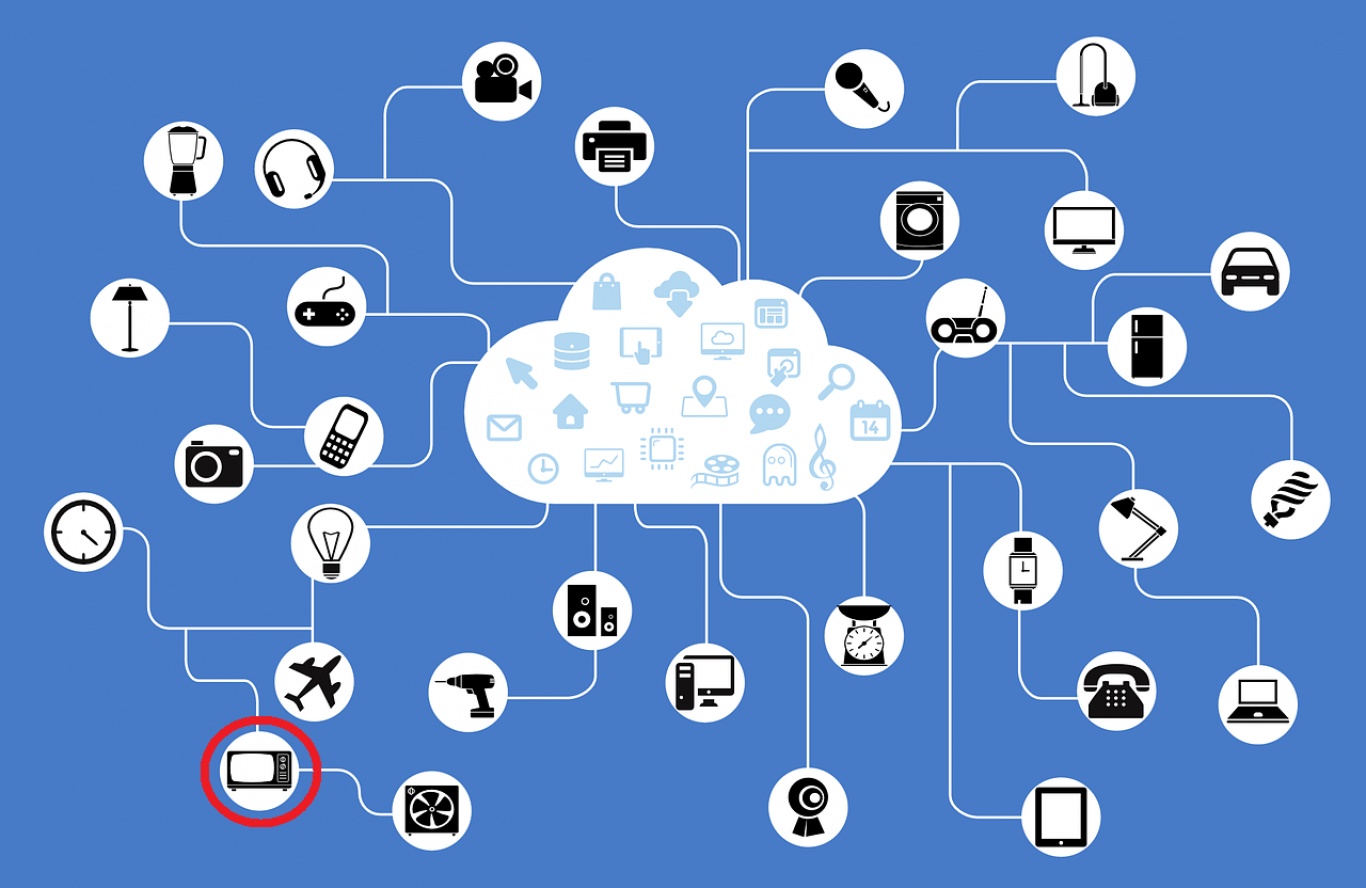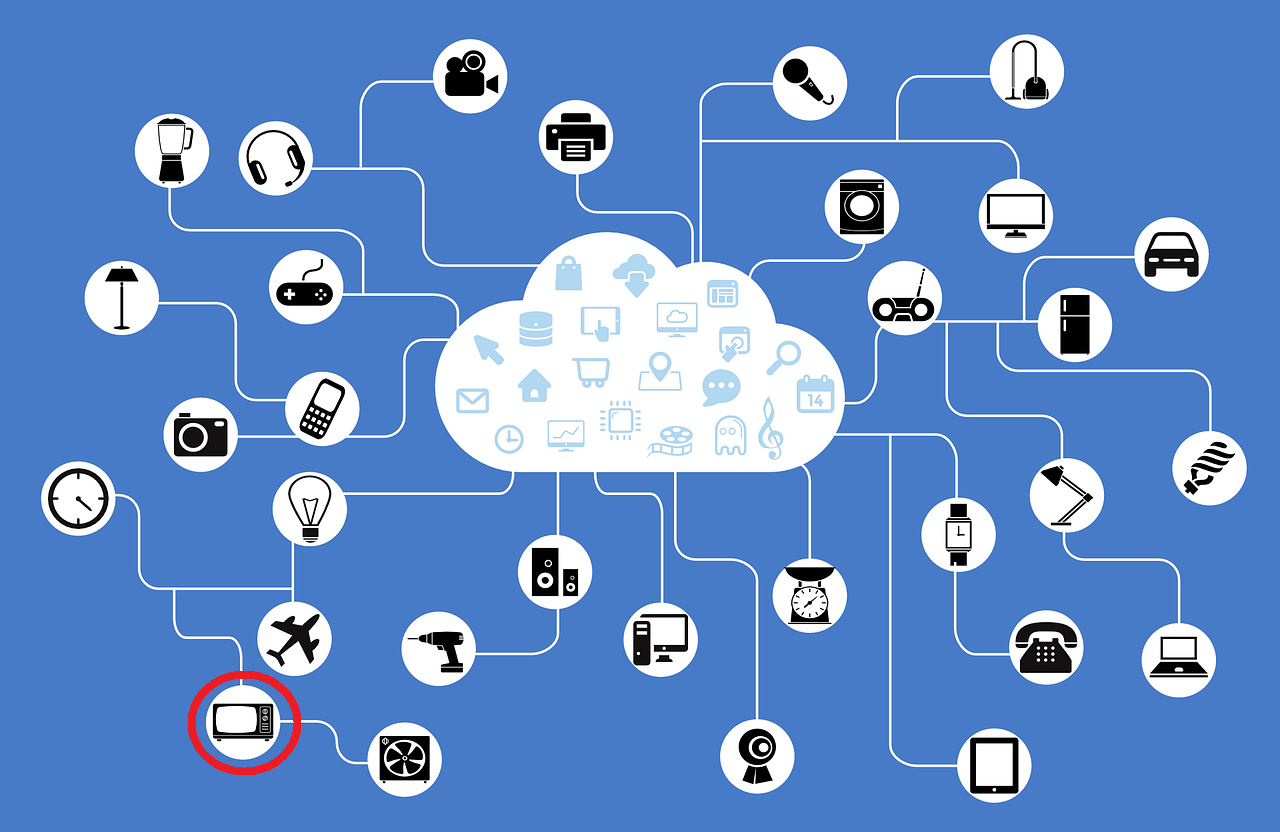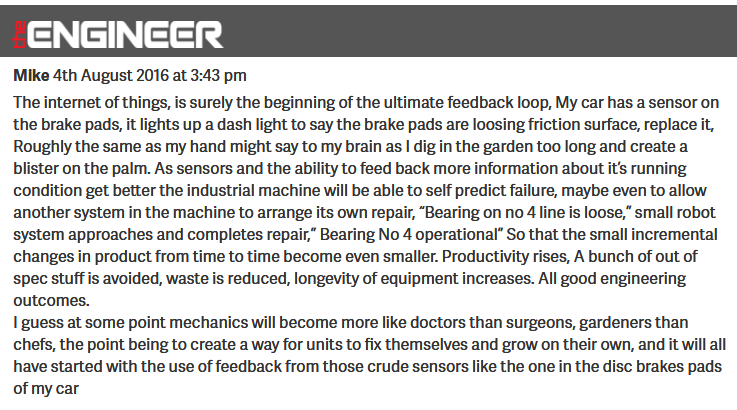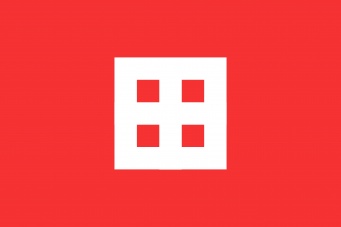
The broadcast industry and the Internet of Things (IoT)
To some, the television is simply a screen that sits in the corner or hangs on a wall in the living room.
To others, it means something else, determined by their preferred device to watch content, their location, the time of day and day of the week and, probably most significantly, their age.
Our ability these days to watch TV programming wherever and whenever we like is unprecedented.
But connected broadcasting is much more than simply watching Netflix, Amazon Prime or any other service that relies on an internet connection.
While driverless cars and smart homes are invariably the IoT products that claim current headlines and attract attention, there’s a lot more going on than most of us hear about day-to-day.
From care for the elderly to farming, traffic management to insurance, and transportation to wearable technology, the IoT, while still in its infancy, is emerging rapidly and will soon be mainstream as it comes to define how we live our lives in the years to come.

Broadcast and the Internet of Things (IoT)
Connected broadcasting, in its truest sense, involves the Internet of Things (IoT). But how will it impact the broadcast industry, which is still getting used to OTT services, the emergence of IPTV and a host of other technologies?

In a blog post earlier in 2016, Ericsson asked: “Will the IoT change how we watch TV?” Here’s a snippet:
As our homes become connected, with everything from our doorbells, locks, lights and energy consumption becoming networked (not to mention the toaster and washing machine), we start to log lots of data about our daily lives.
Of course this extends outside our homes to our connected cars, workplaces, and everywhere in between via our smartphones. Every one of those logged data points providing more and more context. It is this insight which, should we chose to use it, could change how we watch TV.
So the answer, in other words, is yes.
Six ways that IoT will impact broadcasting and viewing
Auto-pause / device control
Your connected TV could automatically pause playback when it detects (or is fed information about) any of the following:
- Somebody ringing your doorbell
- Your phone receiving a call
- You leaving or entering the room (the motion sensors that control your lighting would report that)
Content recommendations
Your TV will consider your current situation based on data and context, such as:
- The time of day – for example, is it before 8am or did you enter the room later than normal because you had to work late?
- The brightness of your room – a low light could indicate tiredness or a more relaxed or sombre mood, while brighter room lighting might suggest that you’re feeling more awake or engaged in another activity). This could influence what appears now and next on your TV, rather than simply recommending what to watch, or automatically playing it, based on what you watched previously.
Alternatively, your TV might work the other way round and influence the lighting based on the type of content on the screen.
Absence detection
When you go on holiday, your power consumption drops off. The data collected by your heating system could be shared with your smart TV so that when you return from your break and switch it on again, it could offer content accordingly: recordings, your favourite shows on catch-up or specific channels based on what you normally watch and the time of day.
Smart remotes
Imagine a remote control that removes line-of-sight restrictions, delivers two-way communication, longer range of use and extended battery life.
And that same device could be used to open or close curtains and blinds.
It’ll arrive on your doorstep without code and learn supported product features on the initial power-up.
The manufacturer will send firmware updates that add features or fix bugs long after you’ve taken delivery of your product.
What’s more, a misplaced remote will emit a signal from the back of the sofa, a far-flung bookshelf or your child’s bedroom that makes it easy to locate.
Crowd-sourced programming
There are already apps and websites that show crowd-sourced weather forecasts but they could soon make their way to our screens. Users upload weather photos and data in real-time, share reports via social media and engage directly with broadcasters and professional forecasters.
New devices
Luxury items that could enhance the viewing experience include vibrating seats for watching action movies and a device that releases particular smells that are relevant, for example, to food programmes or content on children’s channels.
An increasingly broad industry…and the race is on
The broadcast industry is growing, and already involves…
- Telecom and cable service providers
- Advertisers
- Marketing agencies
- IT firms
- Consumer electronics manufacturers
- TV and movie studios
- Sports bodies
- Event promoters
That list will continue to grow, and now some of the world’s most recognisable tech firms all want a share of the business.
IBC, in a blog post from April 2015, stated:
Through its connected home division, Next, Google acquired Revolv to link to the Android operating system. Samsung spent $200m on SmartThings, which does a similar job of syncing connected gadgets in the home. Apple is making a play with Apple TV, iWatch and iPhone all linked to IoS platform HomeKit and Facebook’s acquisition in January of voice-recognition start-up Wit.Ai is considered its first major foray into IoT.
While those companies invest billions of dollars to acquire entry points into the home, it’s the incumbent service providers who have delivered our TV content for years who are in the driving seat, through existing devices that have become so familiar to us that they’re part of the furniture: remote controls, set top-boxes and satellite dishes.
While nearly all types of media and entertainment businesses will benefit from the IoT, publishers and broadcasters are ahead of the curve.
Many can already harvest various forms of data—location, behavioral, consumer-preference and demographic among them—from a variety of devices and systems, construct detailed consumer profiles and use them to create and instantly deliver personalized content across multiple screens.
A consequence of IoT
The key to all this is, of course, is data. While you’ll be the one controlling the data that gets transmitted to your TV, what about the information that your TV sends out?
Every interaction gives broadcasters and content providers the chance to learn more about their audience, enabling them to make their programming more engaging, interactive and part of an improved viewing experience.
Customer relationships will deepen and last longer
What’s more, with existing billing relationships with customers, they are arguably better placed to deliver additional services into the home than the likes of Google, Samsung, Apple and Facebook (and that’s before questions regarding privacy and trust come into it).
Traditional sales and service departments are not used to customer-centric behaviour and monitoring product use and performance.
A traditional manufacturer or service company knows about sales of its products, its costs and its processes.
It might also know a little about its customers – where they live, for example.
But it won’t know about how its products function with the end-user until, perhaps, something breaks and the customer gets in touch with a problem.
When a service provider or manufacturer gets it wrong, ignores us or dismisses us, we simply move to a competitor.
Through IoT,
Traditional sources of information are now being supplemented by another:
the products themselves.
When a TV, fridge, washing machine or any other domestic device eventually comes to the end of its natural life, the customer-focused manufacturer is of course in prime position to sell us a replacement…and continue our relationship.
IoT represents a significant business opportunity and, as IBC puts it:
The Internet of Things may be superficially about the automatic dimming of lights when you want to watch ‘House of Cards’, but it has the potential to dramatically widen the sphere of the media and entertainment industry.
‘Mechanics will become more like doctors than surgeons’ – Mike the engineer

Source: TheEngineer.co.uk

In The Frame - April '23

In The Frame - March '23
